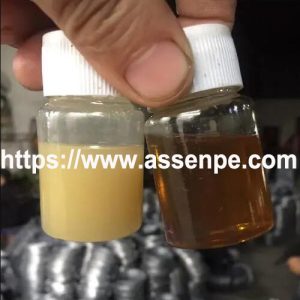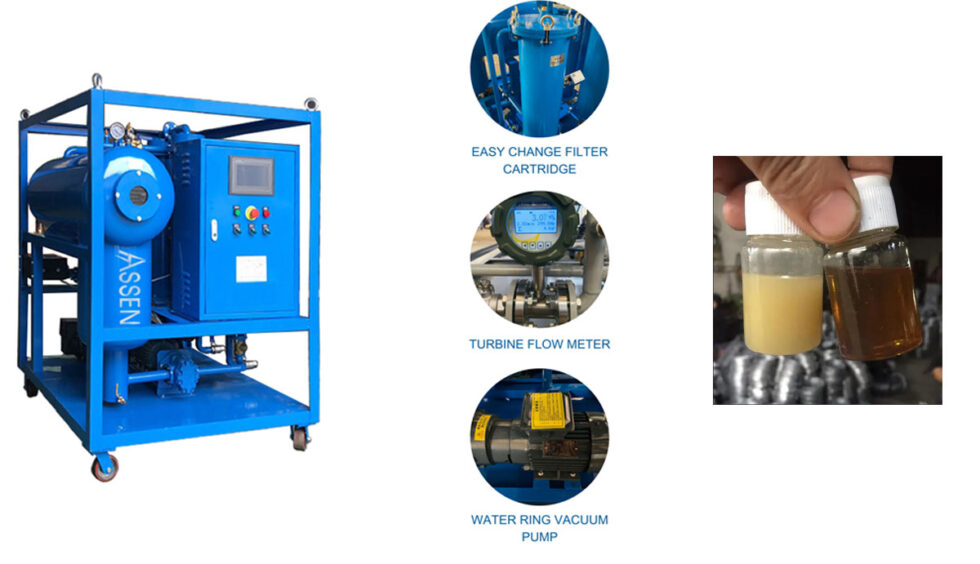Steam Turbine Oil Sludge Removal
Effective Oil Sludge Removal of steam turbine is essential for maintaining efficiency and extending the lifespan of these vital machines.
Steam turbines are critical components in power generation, industrial processes, and marine applications, converting thermal energy into mechanical energy with high efficiency. The performance and reliability of these turbines are heavily dependent on the quality of the lubricating oil used to reduce friction, cool components, and prevent corrosion. Over time, however, oil can degrade and form sludge, which poses significant challenges for turbine operation. Therefore, it needs to be filtered.
Understanding Oil Sludge Formation
Oil sludge is a thick, sticky residue that forms when lubricating oil breaks down due to high temperatures, oxidative reactions, and contamination. In steam turbines, the combination of high operational temperatures and the presence of water vapor or contaminants accelerates sludge formation. This sludge can accumulate in the oil system, including filters, reservoirs, and passages, leading to several operational problems.
Challenges Posed by Oil Sludge
1. Reduced Lubrication Efficiency:
Sludge can obstruct the flow of oil, leading to inadequate lubrication of turbine components. This can increase friction, accelerate wear, and potentially cause catastrophic failures.
2. Clogging of Filters and Passages:
Sludge buildup can clog filters and oil passages, leading to reduced oil flow and pressure. This can impair turbine performance and increase the risk of overheating.
3. Increased Maintenance Costs:
Accumulated sludge necessitates more frequent maintenance and oil changes. The cleaning process can be labor-intensive and costly, impacting overall operational efficiency.
4. Corrosion and Deposits:
Sludge can contain corrosive substances that damage turbine components. Additionally, it can contribute to the formation of deposits on critical parts, further degrading performance.
Methods for Oil Sludge Removal
1. Chemical Cleaning Agents
Chemical cleaning agents are designed to dissolve and remove sludge from the oil system. These agents work by breaking down the sludge into smaller particles that can be filtered out or flushed away. Specially formulated cleaning solutions can be introduced into the oil system during maintenance shutdowns. It’s essential to select chemicals that are compatible with the turbine materials and oil type to avoid damage.
2. Filtration Systems
Advanced filtration systems can be employed to remove sludge from the oil before it causes significant issues. High-efficiency filters, such as those using fine mesh or electrostatic techniques, can capture sludge particles and prevent them from circulating through the turbine. Regularly changing or cleaning these filters is crucial to maintaining optimal performance.
3. Centrifugal Separators
Centrifugal separators use centrifugal force to separate sludge and other contaminants from the oil. By spinning the oil at high speeds, heavier sludge particles are forced to the outer edges of the separator, where they are collected and removed. This method is effective for continuous sludge removal and can be integrated into the turbine’s oil circulation system.
4. Magnetic Filtration
Magnetic filtration can help remove ferrous sludge particles from the oil. By incorporating magnetic elements into the filtration system, ferrous contaminants are attracted and captured, preventing them from causing damage. This method is particularly useful in turbines where metal wear is a significant concern.

Best Practices for Sludge Management
- Regular Monitoring and Maintenance:
Implementing a regular schedule for monitoring oil quality and conducting maintenance can help detect sludge buildup early and address it before it causes significant problems. - Optimizing Operating Conditions: Maintaining optimal operating conditions, such as avoiding excessive temperatures and minimizing water contamination, can help reduce the formation of sludge.
- Proper Oil Selection: Using high-quality lubricating oil with additives designed to resist sludge formation can improve performance and extend oil life.
Conclusion
Effective steam turbine oil sludge removal is essential for maintaining the efficiency, reliability, and longevity of these critical machines. By employing a combination of chemical treatments, advanced filtration technologies, and best maintenance practices, operators can manage and mitigate the impact of sludge, ensuring smooth and efficient turbine operation. As technology continues to advance, new methods and tools will further enhance our ability to tackle oil sludge challenges, paving the way for more reliable and cost-effective turbine performance.
ASSEN is a professional oil purifier manufacturer, and we are devoted to resolving any of your oil filtration issues.
Email:sales@assenpe.com Whatsapp:+86-15223801122

